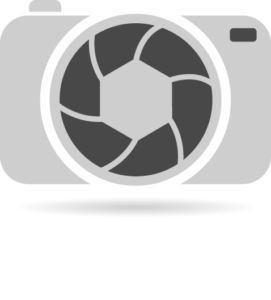While people are getting stressed and demotivated because of the pandemic, some of us are taking advantage, learning, and growing in this situation. This might be the perfect chance for you to buy the camera that will benefit you for the upcoming future and at a lower price.
Many camera companies are offering discounts and you can get a better deal at this time. We have made a list of the best 6 hybrid cameras that you should be buying this pandemic.
Fujifilm X-T4
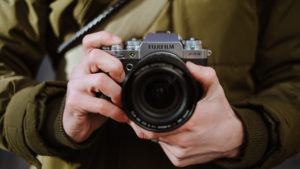
https://amzn.to/2N5OvpF – Buy from here
Number 1 on our list is Fujifilm X-T4. The proud successor of X-t3 doesn’t have the biggest sensor or most megapixels, but when it comes to the actual photographic experience, no other camera delivers quite like the Fujifilm X-T4.
The X-T4 is the first model to address virtually every complaint I’ve ever lodged, even solving one problem (the lack of stabilization in older models) that was previously thought to be impossible. Battery life has nearly doubled, the fully articulating screen is great for video, and autofocus performance is encroaching on Sony territory (that is to say, it’s really good). The newly designed shutter is whisper-quiet and can fire away at 15 frames per second, which, honestly, is more speed than any Fujifilm photographer was even asking for.
Its classic design with analog-inspired control dials is married to modern features like 5-axis sensor-shift stabilization and a fully articulating monitor. It covers the gamut from street photography to video production and everything in between, and it does all of these things to a very high degree of competence.
The X-T4 does carry over much of the same tech as the Fujifilm X-T3, including the 26-megapixel X-Trans sensor, X Processor 4 image processor, and 3.69-million dot electronic viewfinder. The video mode is largely the same, as well, offering 4K at up to 60 fps, but Full HD recording can now hit 240 fps compared to the X-T3’s 120 fps. That means the X-T3, which is now heavily discounted, maybe the better choice for you if you don’t need stabilization, super-speed continuous shooting, or extreme slow-motion video.
Sony A7R IV
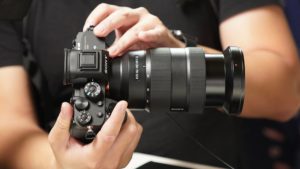
https://amzn.to/2C95WU2Buy Sony A7R IV – Buy from here
The A7R IV may have been bumped out of the top spot by the Fujifilm X-T4, but it still deserves a spot on this list. Simply put, even while it may be overkill for many photographers and situations, a full-frame sensor will easily outperform smaller APS-C sensors, like the one in the X-T4, when it comes to low-light performance and depth of field control. As the first company to produce a full-frame mirrorless camera, Sony remains the leader in this race, even as Canon, Nikon, and Panasonic have started sprinting to catch up. But what’s surprising is how much Sony managed to cram into a camera with such a compact body.
The A7R IV’s sensor now boasts 61 megapixels, the highest resolution you will find short of larger, medium-format cameras. The sensor also delivers excellent dynamic range, great color, and low-noise performance at high ISOs.
But megapixels aren’t everything, and Sony hasn’t forgotten this. The A7R IV has the performance to match, churning out full-resolution bursts at 10 frames per second with autofocus. Sure, the X-T4 is faster, but considering the massive bandwidth requirements of Sony’s 61-megapixel sensor, that’s very impressive.
The A7R IV also uses Sony’s latest Real-Time autofocus, one of the best autofocus systems we’ve tested, certainly the best on mirrorless. It offers decent low-light sensitivity, good speed, and the best face and eye-tracking you can get.
Despite all the tech inside, the camera body weighs in at just 23 ounces. The body is weather-sealed, with a control scheme that feels balanced and easy to use (although, Sony’s menu system remains a sore point), and the new battery is good for 670 exposures, which is excellent for mirrorless.
Nikon D780
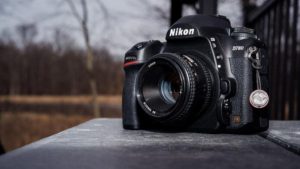
https://amzn.to/3ecObkP – Buy from here
The D780 isn’t just Nikon’s newest DSLR, it’s also the most refined. It replaces the incredibly popular D750 — from way back in 2014 — and uses an updated 24-megapixel sensor. It is Nikon’s first DSLR to incorporate on-chip phase-detection autofocus, a feature inherited from its mirrorless Z series that gives the D780 responsive performance in live view and video modes. The eye-detection autofocus, in particular, is very impressive.
That does beg the question: Why buy the D780 when you could just get the Z 6, which is currently quite a bit cheaper? Honestly, I think most people are better off doing exactly that. Mirrorless cameras offer advantages in packaging, user-friendliness, and, at least, in this case, price. The Z 6 is a capable camera and I love the strategy Nikon is taking with its Z-series lenses.
The D780, then, is more of a specialist. Many photographers still love using an optical viewfinder, and the D780’s, if nothing new, is still nice, offering 100% frame coverage and a bright pentaprism. Additionally, the larger body of a DSLR can be more comfortable when paired with certain lenses, especially longer zooms that grow too front-heavy on mirrorless cameras.
Battery life is another advantage. Optical viewfinders draw very little power. Combined with efficiency improvements, the D780 can work all day long with a CIPA rating of 2,260 shots per charge. I have to imagine only a small group of people actually need that kind of long-lasting power, but it’s a welcome feature for those who do and means you can save money by not having to buy spare batteries.
The higher-resolution D850 was my previous choice for best DSLR, and that’s still the better camera for some photographers, namely working pros. I think the D780 offers the best balance of features for the price, however, and its 4K video and faster live-view autofocus make it the right choice for the majority of customers. I wish Nikon had put an AF joystick on it, but oh well — you can’t win them all.
Sony A6100
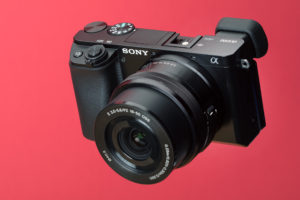
https://amzn.to/2UWu7fc – Buy from here
Sony’s full-frame mirrorless cameras are excellent — but expensive. The Sony A6100 brings some of the best features from the A7 series into a camera that’s less than $900 (including a lens). It still uses the same Sony E mount as the A7, too, so you can use all of the same lenses if you want to be able to upgrade to a full-frame model down the road.
The A6100 sports a 24-megapixel APS-C sensor that’s smaller than full-frame, helping the camera keep its low profile. While that does mean low light performance won’t match the full-frame Sonys, it still delivers excellent results for most situations.
You also get Sony’s incredible 425-point hybrid autofocus system. Like the latest A7 models, the A6100 includes Sony’s artificial-intelligence-based Real-Time Tracking and Real-Time Eye autofocus technologies for recognizing and following subjects. It’s especially useful when shooting photos at 11 fps, the A6100’s maximum burst speed. From keeping up with your pets to capturing all the action of your kid’s little league game, the A6100 has it covered.
Beyond still photography, the A6100 is a strong performer for movies, too. It shoots 4K video and gives you a microphone jack if you want to get serious about upping the audio quality.
While the A6100 is missing out on extras like the image stabilization — a feature included in the pricier Sony A6600 — the camera wraps several big features into an affordable, compact camera. I’m not the biggest fan of Sony’s menu system, but the A6100’s touchscreen makes it easier to use and lends the camera a smartphone-esque feel, making it approachable to first-time camera buyers.
Panasonic Lumix GH5
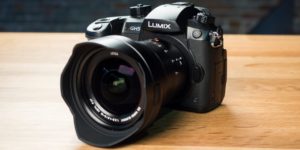
https://amzn.to/2ANp7lY – Buy from here
All of the cameras on this list shoot 4K video, but only in the Lumix GH5 is video, not a secondary focus. Where many DSLRs and mirrorless cameras have short recording limits, the GH5 will happily continue shooting until the card fills up or the battery dies.
Beyond that, it was one of the first cameras to offer smooth-as-butter 60-fps 4K. It also includes a number of video features targeting professional users, including 10-bit 4:2:2 recording, clean HDMI output, and an optional log gamma profile via paid firmware upgrade which produces film-like footage suitable for color grading. Even if you don’t care about those features today, I can attest that once you’ve learned how to use them, it’s hard to go back to a lesser machine. Compared to most other mirrorless cameras, the GH5 leaves you room to grow into.
The camera can also hold its own among for still photos. Autofocus is lightning fast and it can shoot 9 frames per second with continuous autofocus, or 12 with focus locked. The GH5 also has several Panasonic-exclusive features, including 4K and 6K photo modes where you can choose the focus point after the shot, merge several images together for a deeper depth of field, or shoot reduced-resolution still photos at 60 or 30 fps, respectively.
While you can buy cameras with larger or higher-resolution sensors for the same price, the GH5 has an unbeatable best mix of photo and video features and outclasses many cameras costing much more when it comes to advanced video functions. The, even more, video-centric Lumix GH5S further raises the bar, but I’ve kept the standard GH5 in this spot as it’s cheaper, better for still photography, and easier to use thanks to its in-body image stabilization, which the GH5S lacks. Video pros should look into the S model, however.
Nikon Z6
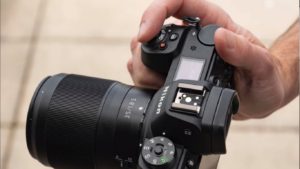
https://amzn.to/30R4mAL – Buy from here
The Z6’s build quality is top of the line, with the ruggedness we’ve come to expect from Nikon bodies. In fact, it’s quite likely the best-built mirrorless full-frame camera on the market right now, with great ergonomics and match. One thing that is quite different, though, is the lens mount. Nikon ditched the old F-mount in lieu of the new Z-mount, which is designed to let in more light to the Z-series sensors. In fact, a new manual-focus 58mm f/0.95 S lens is expected very soon. Talk about a fast lens!
At the moment though, there aren’t many native lenses available for either the Z6 or Z7. Luckily most F-mount lenses will work just fine with the new FTZ mount adapter, although at around $250 it’s not cheap. Another thing that stands out in the build of the Nikon Z6 is the fantastic electronic viewfinder. It’s crisp, clear, and boasts an exceptionally high resolution.
The downside of this is that the 60Hz refresh rate is a bit slow, especially when shooting in burst mode. The touchscreen is also quite beautiful, but for some reason lacks touchscreen autofocus while you’re looking through the viewfinder.
Speaking of autofocus, the Z6 keeps up with Sony a7 III in most situations, although it loses out in low light. It also does a reasonably good job of tracking subjects, both at 5.5 fps (with live view) and 9 fps (no live view). As far as movie footage is concerned, no disappointments here. The Z6’s 4k movie footage is simply stunning, with frame speeds up to 30p for 4K UHD, as well Full HD video in 60p and 120p slow-motion in HD.
As expected, the Nikon Z6 also comes with plenty of capture tools, including 10-bit Log output.
Like the Sony a7 line, the Nikon Z6 comes with effective 5-axis image stabilization, allowing you to handhold it in low light and still achieve steady shots, even at 0/5~1 second shutter speeds!
All the links to buy these cameras are added to the respective camera name. If you have any questions or are having trouble finding the best camera for you, send us an e-mail and we’ll be happy to help you.
